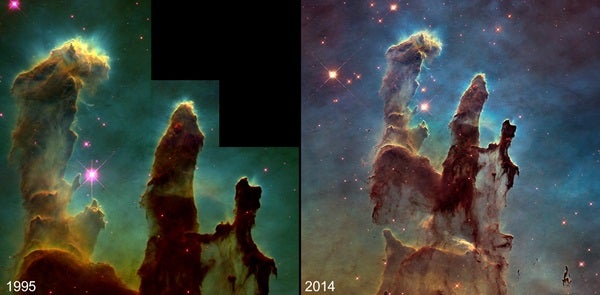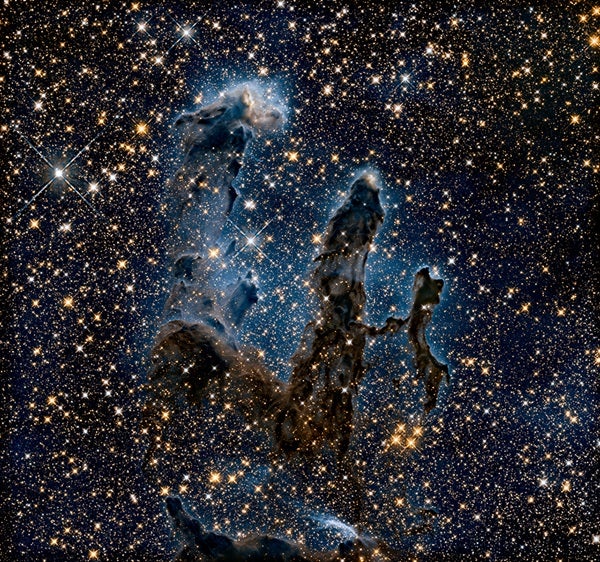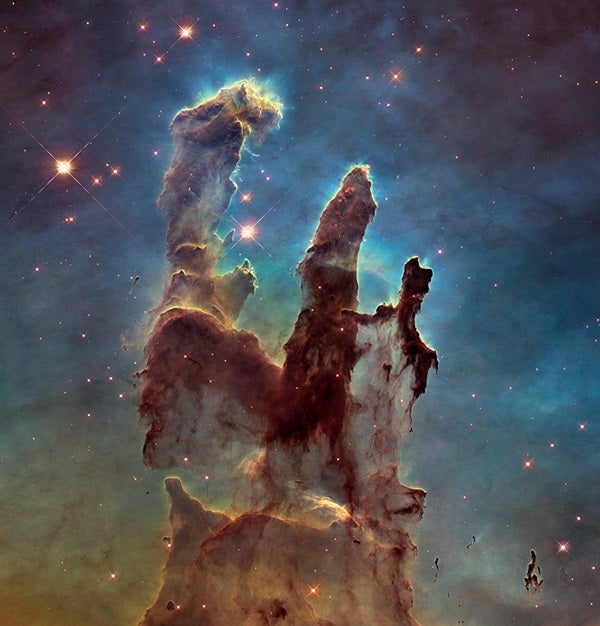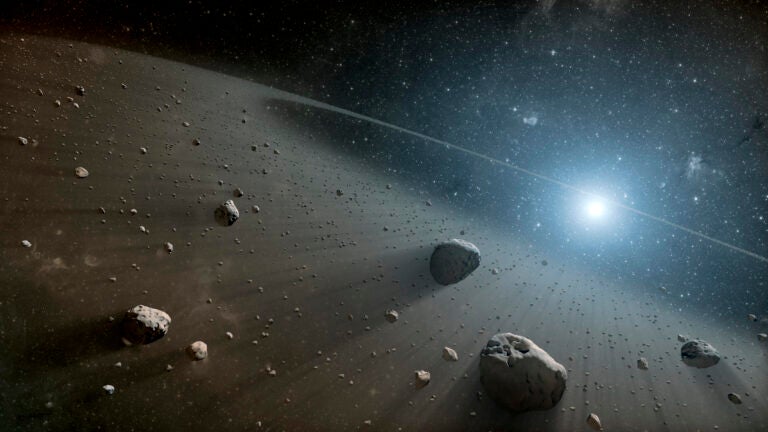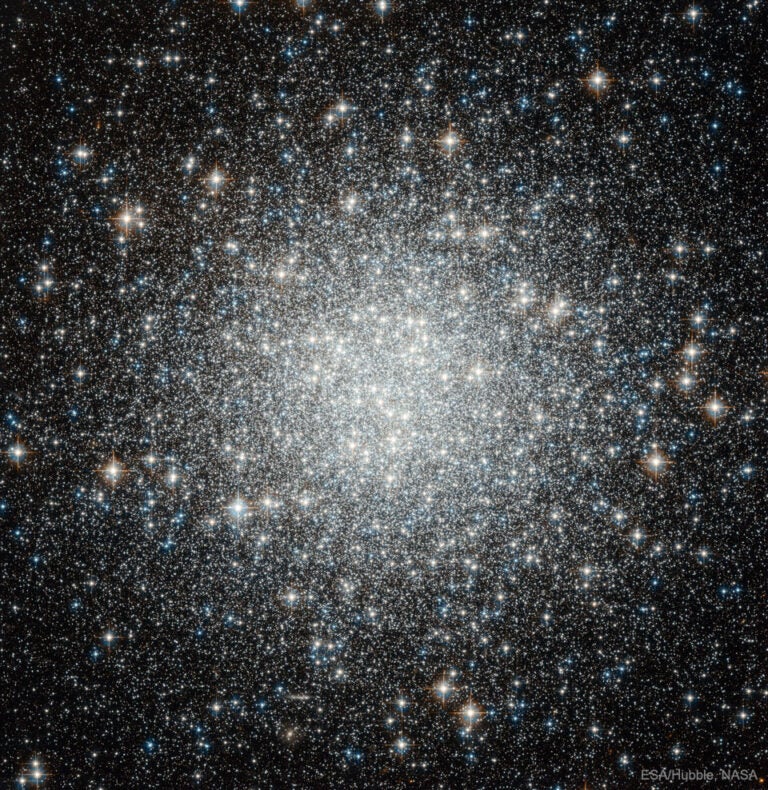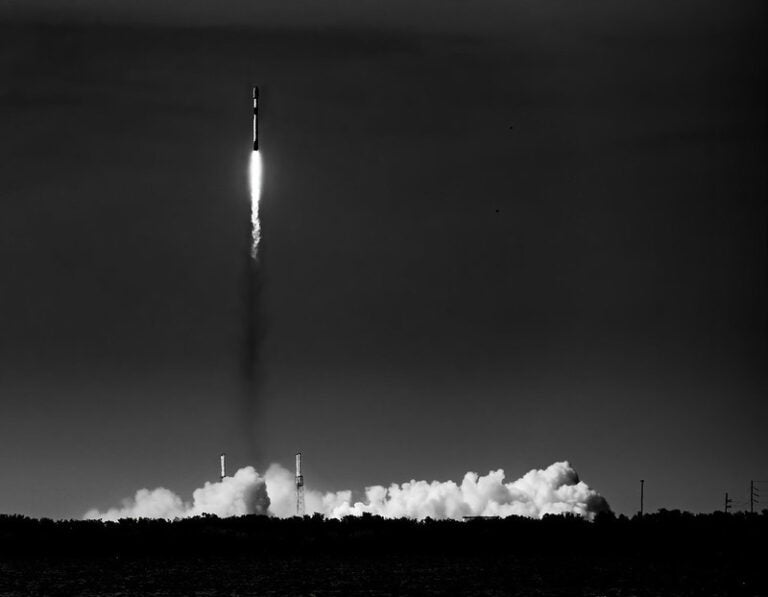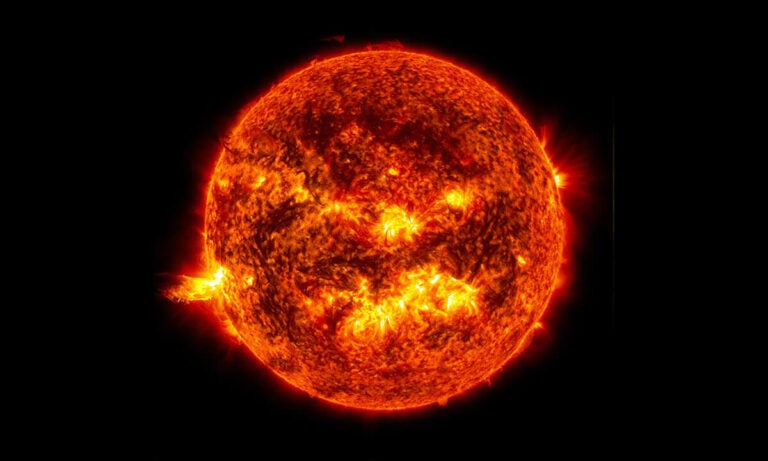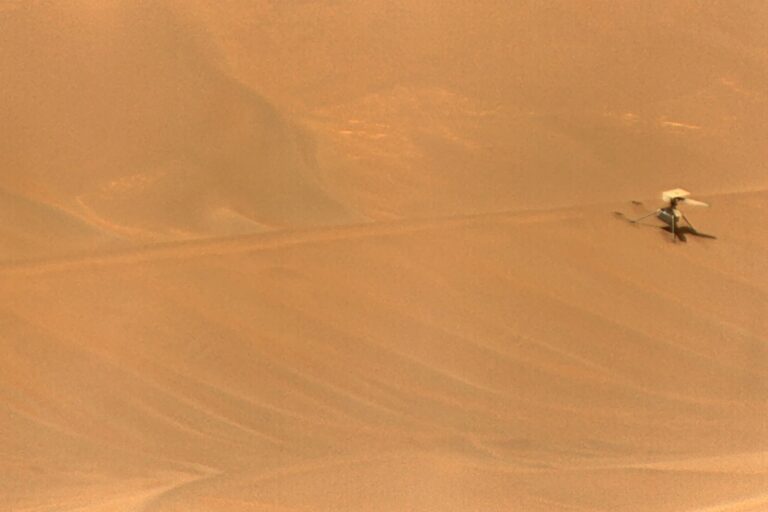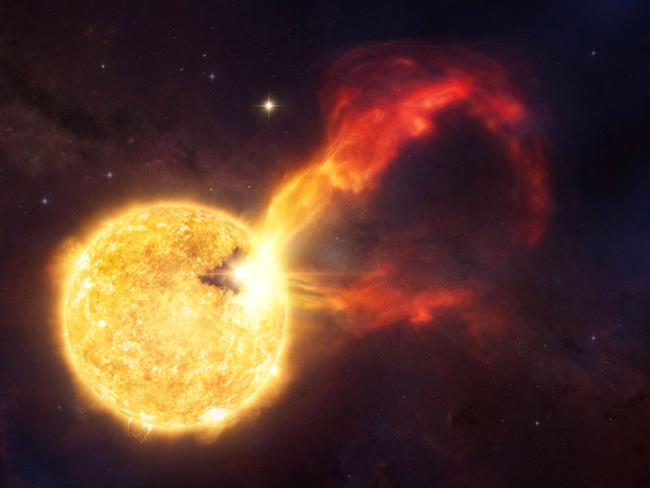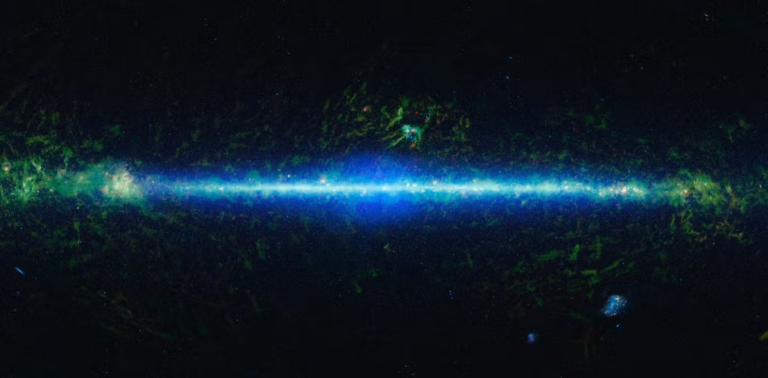Though such butte-like features are common in star-forming regions, the M16 structures are by far the most photogenic and evocative. The Hubble image is so popular that it has appeared in movies and television shows, on t-shirts and pillows, and even on a postage stamp.
The near-infrared light can penetrate much of the gas and dust, revealing stars behind the nebula as well as hidden away inside the pillars. Some of the gas and dust clouds are so dense that even the near-infrared light cannot penetrate them. New stars embedded in the tops of the pillars, however, are apparent as bright sources that are unseen in the visible image.
Although the original image was dubbed the Pillars of Creation, the new image hints that they are also pillars of destruction. “I’m impressed by how transitory these structures are. They are actively being ablated away before our very eyes. The ghostly bluish haze around the dense edges of the pillars is material getting heated up and evaporating away into space. We have caught these pillars at a very unique and short-lived moment in their evolution,” explained Paul Scowen of Arizona State University in Tempe, who, with astronomer Jeff Hester, formerly of Arizona State University, led the original Hubble observations of the Eagle Nebula.
The infrared image shows that the reason the pillars exist is because the very ends of them are dense, and they shadow the gas below them, creating the long, pillar-like structures. The gas in between the pillars has long since been blown away by the ionizing winds from the central star cluster located above the pillars.
At the top edge of the left-hand pillar, a gaseous fragment has been heated up and is flying away from the structure, underscoring the violent nature of star-forming regions. “These pillars represent a very dynamic, active process,” Scowen said. “The gas is not being passively heated up and gently wafting away into space. The gaseous pillars are actually getting ionized (a process by which electrons are stripped off of atoms) and heated up by radiation from the massive stars. And then they are being eroded by the stars’ strong winds (barrage of charged particles), which are sandblasting away the tops of these pillars.”
As Scowen was piecing together the Hubble exposures of the Eagle, he was amazed at what he saw. “I called Jeff Hester on his phone and said, ‘You need to get here now,'” Scowen recalled. “We laid the pictures out on the table, and we were just gushing because of all the incredible detail that we were seeing for the very first time.”
The first features that jumped out at the team in 1995 were the streamers of gas seemingly floating away from the columns. Astronomers had previously debated what effect nearby massive stars would have on the surrounding gas in stellar nurseries. “There is only one thing that can light up a neighborhood like this: massive stars kicking out enough horsepower in ultraviolet light to ionize the gas clouds and make them glow,” Scowen said. “Nebulous star-forming regions like M16 are the interstellar neon signs that say, ‘We just made a bunch of massive stars here.’ This was the first time we had directly seen observational evidence that the erosionary process, not only the radiation but the mechanical stripping away of the gas from the columns, was actually being seen.”
By comparing the 1995 and 2014 pictures, astronomers also noticed a lengthening of a narrow jet-like feature that may have been ejected from a newly forming star. The jet looks like a stream of water from a garden hose. Over the intervening 19 years, this jet has stretched farther into space, across an additional 60 billion miles, at an estimated speed of about 450,000 mph.
Our Sun probably formed in a similar turbulent star-forming region. There is evidence that the forming solar system was seasoned with radioactive shrapnel from a nearby supernova. That means that our Sun was formed as part of a cluster that included stars massive enough to produce powerful ionizing radiation, such as is seen in the Eagle Nebula. “That’s the only way the nebula from which the Sun was born could have been exposed to a supernova that quickly, in the short period of time that represents, because supernovae only come from massive stars, and those stars only live a few tens of millions of years,” Scowen explained. “What that means is when you look at the environment of the Eagle Nebula or other star-forming regions, you’re looking at exactly the kind of nascent environment that our Sun formed in.”

